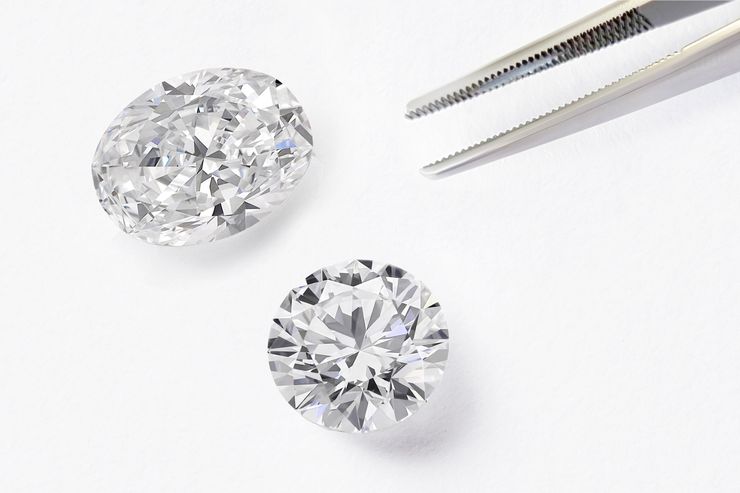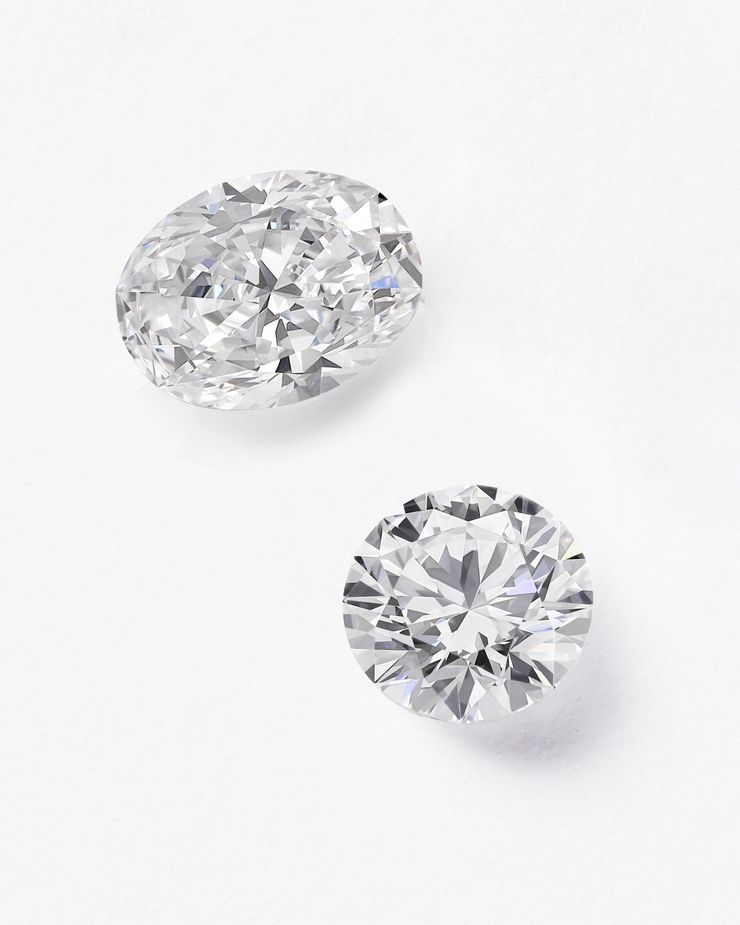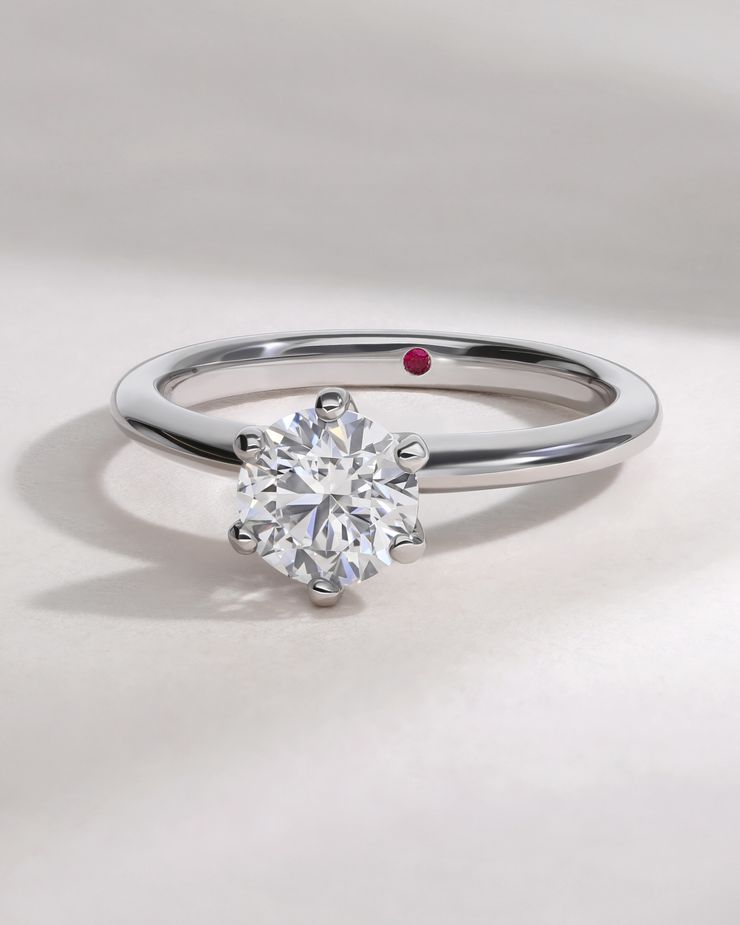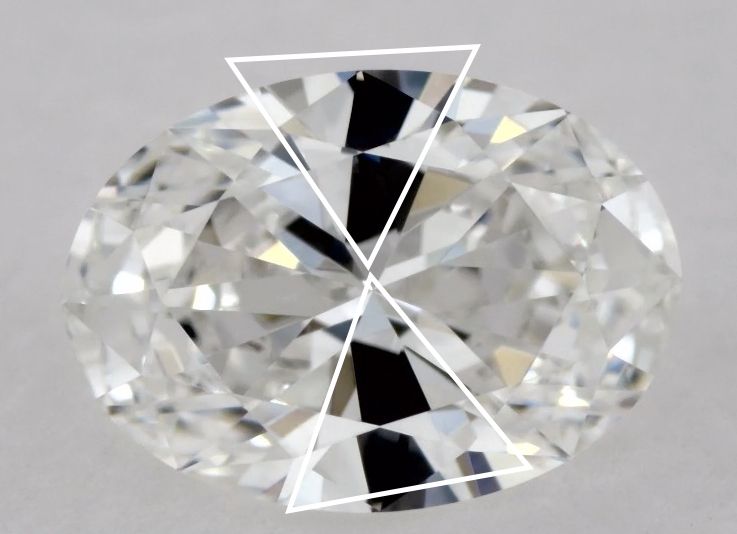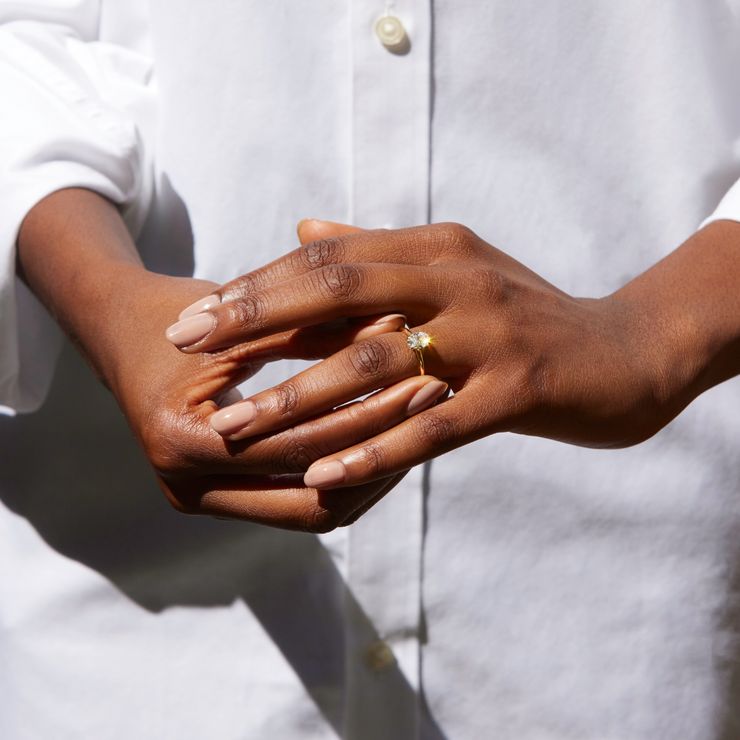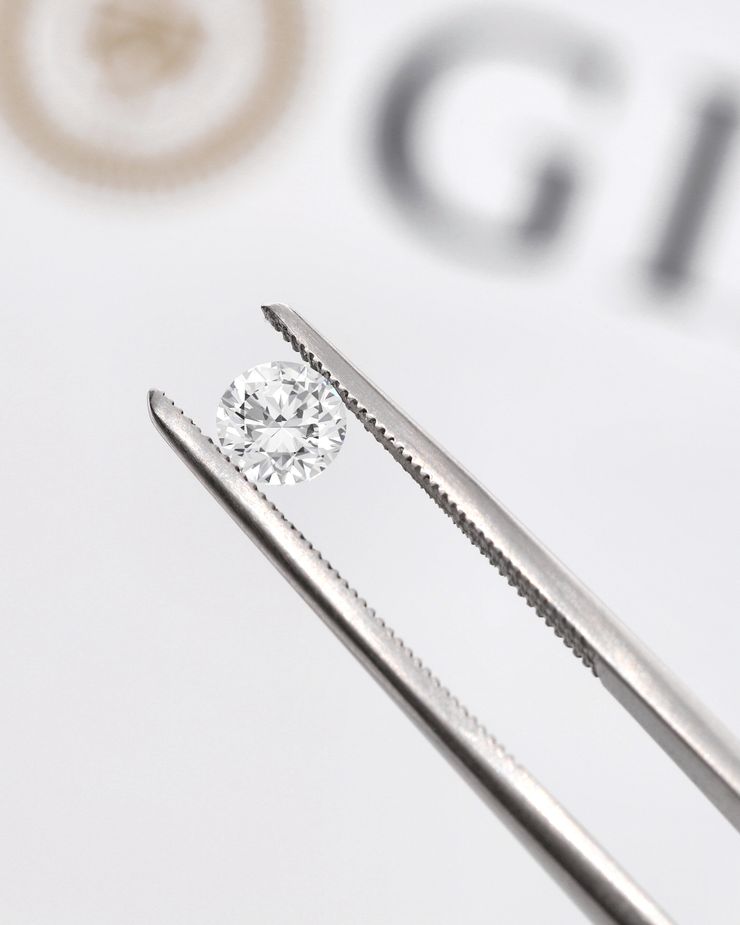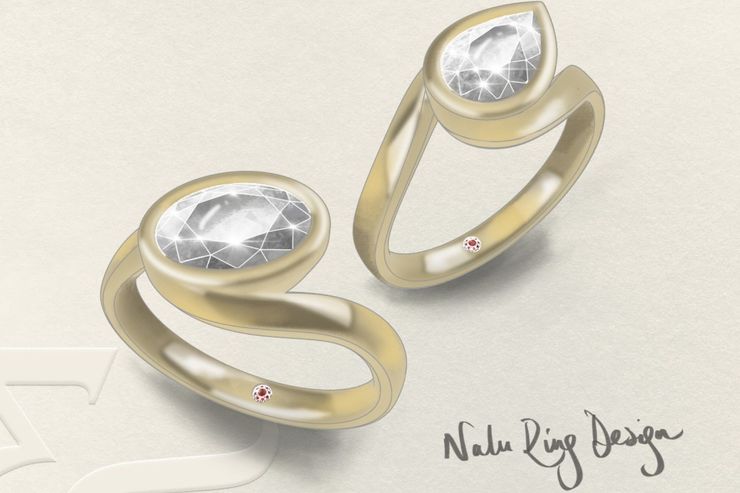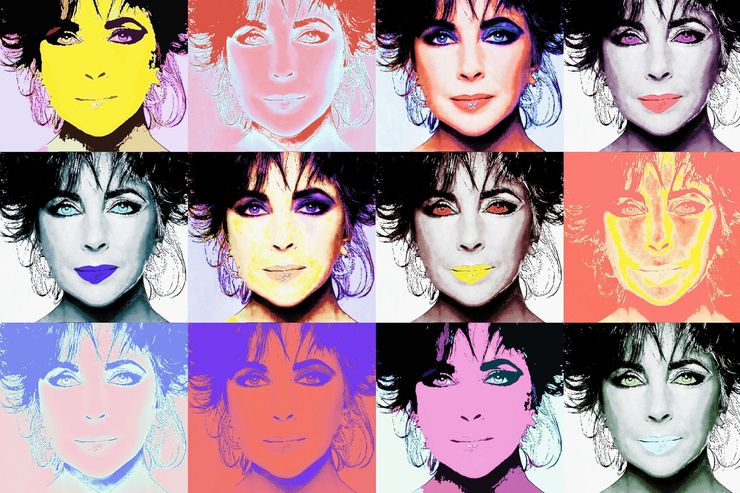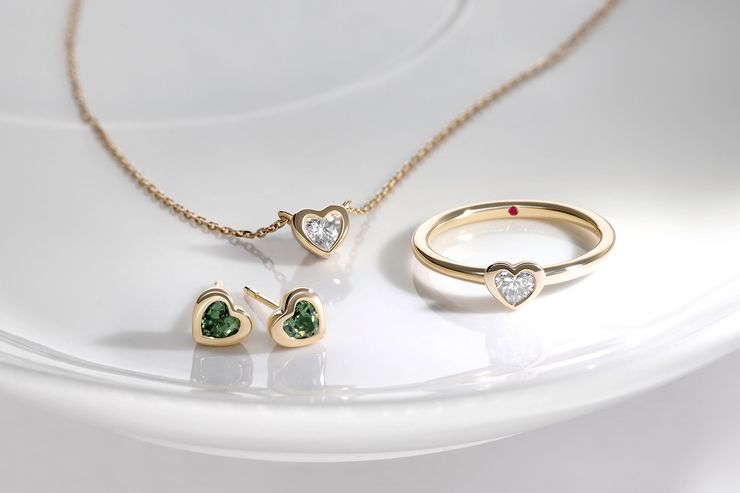How popular are round and oval diamonds?
First on the agenda: why are round and oval cuts so popular? Before we dig into our access all areas guide, let’s establish the fundamental difference between the two.
The round cut diamond is an iconic, time-honoured style that has a perfectly symmetrical shape. From Old Hollywood to the A-list, this diamond shape is an ever-present cultural phenomenon. It was initially established in the 17th century and is best known for its traditional relevance alongside its captivating fire and light-bouncing brilliant cut. In fact, the round cut accounts for almost 75% of diamonds sold worldwide.
The oval shape diamond also offers the same enlivened magic, but with a distinctively different essence. Appearing in an elongated silhouette, this cut is a unique, modern spin on the traditional round diamond. Introduced in 1957 by Lazare Kaplan, the oval diamond also features a brilliant cut to ensure the same light-refracting fire as its round counterpart, but with the benefit of being a characterful and contemporary alternative.
From the traditionalist to the modern mind, both cuts share one very important benefit: versatility. Thanks to a curved form, they look perfectly at home when incorporated into, well, pretty much any design. The oval diamond engagement ring lends an elongating illusion to the finger whilst the round cut is universally flattering, allowing everyone to enjoy its scintillating delights. As a result, we recommend leading with your personal taste at this very early stage.

